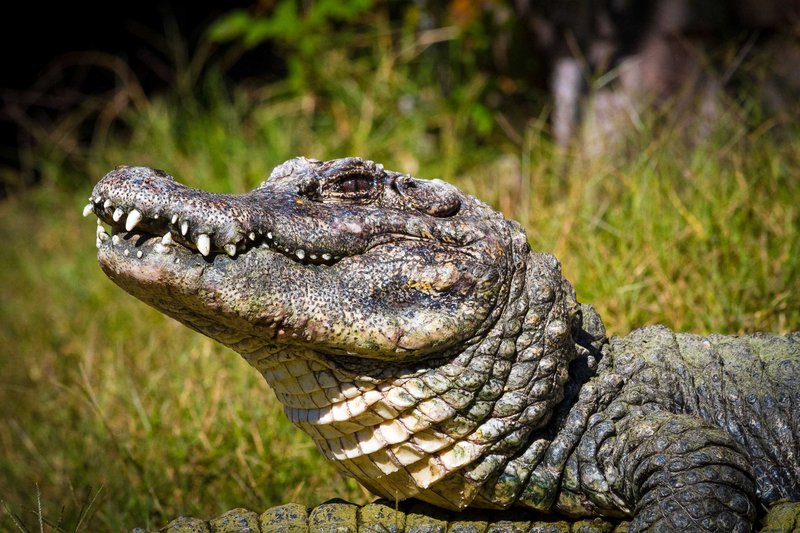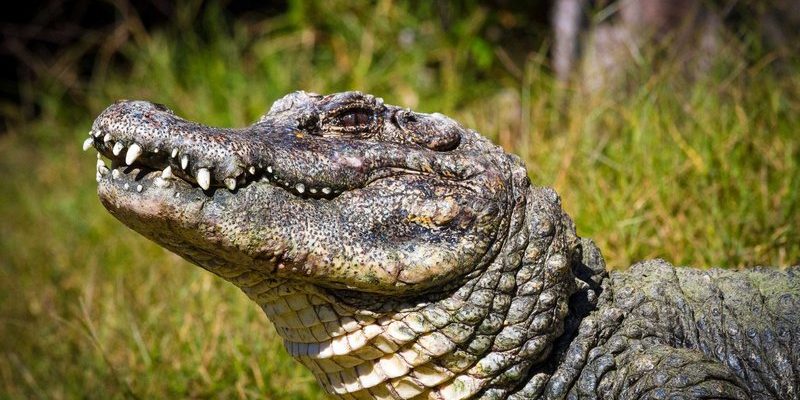
Identifying a Chinese alligator isn’t just about knowing which features to look for; it’s also about understanding where you might find them. These alligators are incredibly rare and typically reside in specific areas in China, mainly along the Yangtze River. To help you on your journey, we’ll break down their characteristics, habitat, and behavior, making it easier for you to spot one if you’re ever lucky enough to be in their presence.
Physical Characteristics of the Chinese Alligator
To identify a Chinese alligator, you’ll want to start with its physical characteristics. Unlike the larger American alligator, the Chinese version is much smaller, usually reaching lengths of about 4 to 7 feet. Their bodies are covered in a rugged, dark armor of scales that can give them a somewhat prehistoric look. But here’s the thing—one of the most distinguishing features is their broad snout. It’s shorter and wider compared to other alligator species, which is a key identifier.
You might also notice their unique coloration. Adult Chinese alligators typically have a darker, more muted color, usually a mix of dark gray and brown. This helps them camouflage in their natural habitat, which is crucial for their survival. You might find them nestled among the marshy plants, blending right in with the shadows. So, if you’re out in their territory, keep an eye out for any darker shapes lurking quietly in the water.
Habitat of the Chinese Alligator
Locating a Chinese alligator requires knowledge of its natural habitat. These reptiles prefer slow-moving rivers and freshwater marshes with plenty of vegetation. Think of it like searching for a needle in a haystack—if you don’t know where to look, you might miss them entirely. Their range is primarily in the Yangtze River Delta, so if you’re wandering through that region, you’re in the right place.
These alligators are also known to inhabit areas with soft mud or silt at the bottom. This not only provides them with a suitable environment for nesting but also allows them to hide easily from predators and humans alike. When the weather is warm, they often bask on riverbanks, soaking up the sun. If you see a small, dark figure resting on the edge—take a closer look; it might just be a Chinese alligator.
Behavioral Traits
Understanding the behavioral traits of the Chinese alligator can make identifying them much easier. They’re primarily nocturnal, which means they’re most active at night. So, if you’re on the lookout during the day, you might need to adjust your expectations. You’re more likely to spot them during dawn or dusk when they come out of hiding to hunt for food.
Another interesting fact is that Chinese alligators are less aggressive compared to their American relatives. They tend to be more reclusive and will often retreat if they sense a threat. If you happen to see one, be sure to keep your distance and observe quietly. The less disturbance you cause, the better your chances of witnessing their natural behaviors.
Spotting Tips
Now that you know how to identify a Chinese alligator, let’s talk about some spotting tips. The key is patience and a keen eye. Here are a few strategies to increase your chances of seeing one:
- Stay Quiet: Noise can scare them away. Move slowly and speak softly.
- Use Binoculars: Since they like to hide, a good pair of binoculars can help you see them from a distance without disturbing them.
- Observe the Water: Look for ripples or disturbances in the water—these could indicate an alligator moving beneath the surface.
- Watch for Basking: During cooler parts of the day, they may come out to bask on rocks or banks.
Having a good camera handy can also help you capture the moment without getting too close. Remember, your goal is to observe, not to intrude.
Conservation Status
It’s essential to acknowledge the conservation status of the Chinese alligator. Sadly, they are classified as a critically endangered species. The main reasons for their decline include habitat loss due to human activity and pollution.
If you’re passionate about wildlife, consider supporting conservation efforts in the region. Even simple actions, like raising awareness about the plight of this unique species, can make a difference. Being informed is the first step toward helping protect these incredible reptiles for future generations.
Why It Matters to Identify Chinese Alligators
You might be wondering why it’s so important to identify Chinese alligators. Well, understanding and recognizing these creatures contributes to broader conservation efforts. By knowing what they look like and where they live, we can help protect their habitats. Plus, learning about them enriches our understanding of biodiversity and the ecological chain.
If more people are educated about Chinese alligators, there’s a better chance of preserving their ecosystems. Every species plays a role in the balance of nature, and losing one can disrupt the entire system.
Identifying a Chinese alligator in the wild might sound like a daunting task, but with some patience and knowledge, it can be a rewarding experience. Remember to look for their distinctive physical features, understand their habitat, and respect their space. Every sighting is a chance to appreciate the beauty and diversity of our planet.
The more we understand about unique creatures like the Chinese alligator, the better equipped we’ll be to protect them. So, the next time you find yourself in the Yangtze River Delta, keep your eyes peeled and your camera ready; you just might spot one of these remarkable reptiles basking in the sun. Happy animal spotting!

